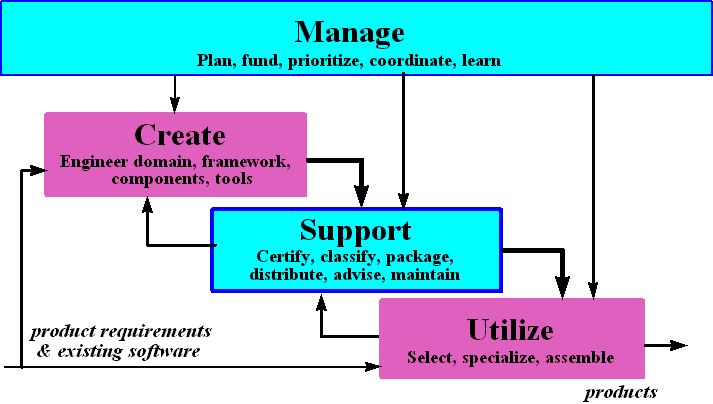
Martin L. Griss, Laboratory Scientist
(Fusion Newsletter, Oct 1996)

Figure 1. The incremental adoption of reuse is driven by compelling business needs
Figure 2 shows a basic reuse process model. To explicitly support reuse-enabling guidelines, the model has four distinct process elements:

Figure 2. Ideal reuse process and organization